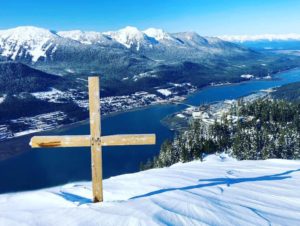January 9
Day 301: Messy Atoning Work
Chapters 36-38 continue the record of how the people of Israel completed the design and construction of the mobile Tabernacle. And how they followed the instructions to the letter.
In some cases, but not all, a bit of detail is given. Exodus 38:8 says, "He (the lead craftsman) made the basin of bronze and its stand of bronze, from the mirrors of the ministering women who ministered in the entrance of the tent of meeting."
These ladies, deacons, had handheld mirrors, made of highly polished bronze. Likely plunder from their Egyptian neighbors, taken the morning after the Passover.
Why significant? These deacons gave up looking at their own image, to contribute to seeing an image of God's relationship to mankind. (Go with me a little further on this.)
Out of these bronze handheld mirrors the craftsman created a basin. A washing basin. A washing basin for the priests.
Why significant? Atoning for sin was a messy business. A bloody business. The attending priests, those who did the slaughtering, had to wash up. Before and after.
When not in almost constant use, the basin held water. Still, quiet water. Later on, King Solomon made a gigantic bronze basin for the Temple, called the "bronze sea."
Ancient people equated large bodies of water, let alone the Mediterranean Sea to evil and chaos and loss of life.
Why significant? This bronze basin, when not in use conveyed a metaphor that God can make the chaotic (sin, and its brokenness) calm, because He is the place of calm.
The metaphor would go something like this: When sin is atoned for, and when the guilt of that sin is washed away, we can then enjoy a undefiled, peaceful, devoted relationship with our God.
Why no bronze wash basin today? Ephesians 5:25-27 answers this question full stop. "Husbands, love your wives, as Christ loved the church and gave himself up for her, that he might sanctify her, having cleansed her by the washing of water with the word, so that he might present the church to himself in splendor, without spot or wrinkle or any such thing, that she might be holy and without blemish.
That bronze wash basin, placed out in the courtyard, located between the common area and the holy areas, was (for us) a picture of Jesus Himself. A picture of Who He is, and what He has done.
And while we may each think otherwise, each tempted to disbelieve or disprove what we just read in Ephesians, because we know ourselves to be far less than holy...we are, in fact, what we just read together.
Sanctified. Cleansed. In splendor. Without spot or wrinkle. Holy and without blemish.
Because Jesus did for us the messy atoning work.
-Mike Rydman, Lead Pastor, Radiant Church Juneau

